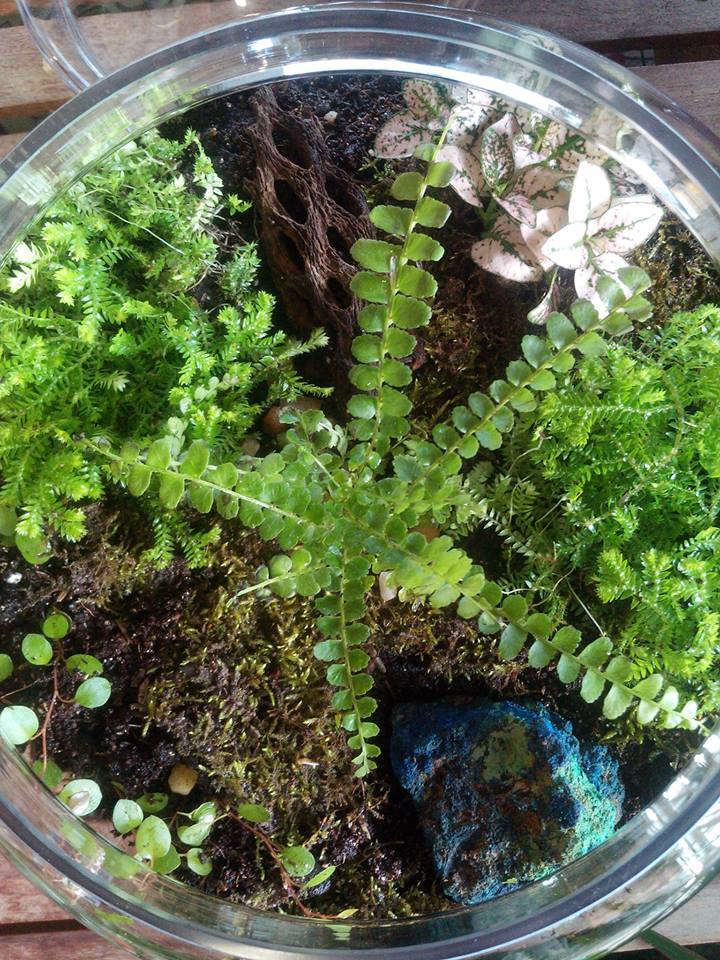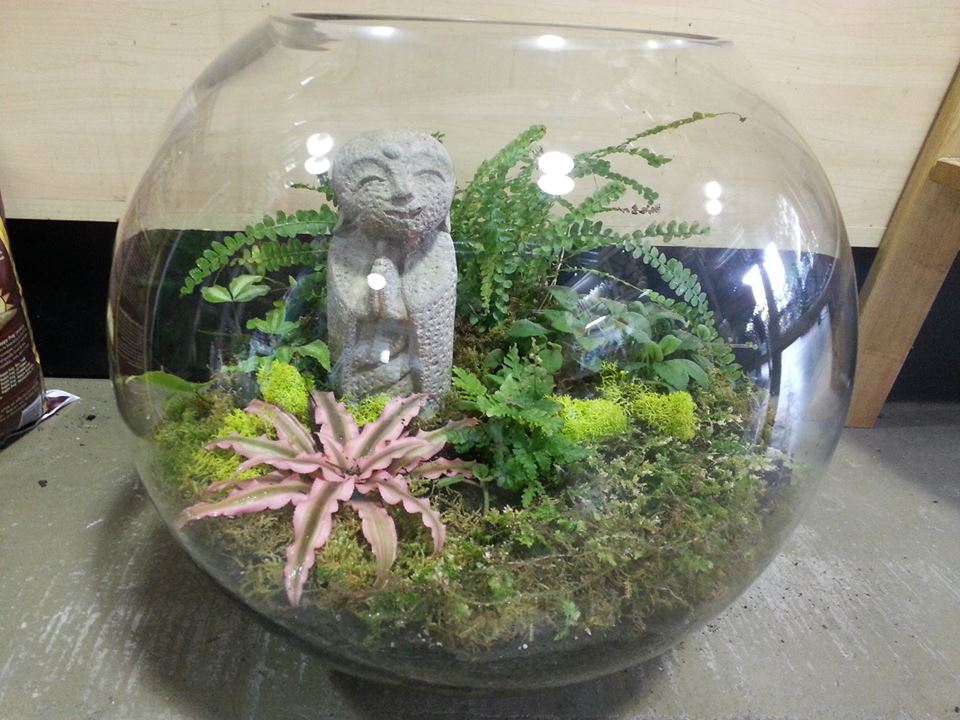
Terrariums have been an on-again, off-again fad since the mid-1800’s and have always sparked the human imagination. No matter their current popularity, these little curios are an interesting addition to any home decor, a great way to connect to nature during the cold months, and a very rewarding hobby. We have a lot of people come into Fifth Season Gardening in Carrboro looking for tips on how to build a terrarium, so here we will cover some basics everyone should know about the components used in creating these little worlds.
Through years of people keeping plants under glass, we have come to find almost any clear vessel can be used to build a terrarium, with some options to consider. The most discussed difference in containers lies in whether to choose an open or closed top. Open-top terrariums need to be watered more often, while closed ones require far less water. When picking a piece of glass, also consider the shape. What kind of plants will look good in there? Is there enough room for both soil and foliage? The latter is especially important for vase-like glass pieces with a short-wide bottom and a long-skinny top. Generally, any piece of glass, from empty soda bottles to old aquariums, can be turned into a terrarium, but some odd shapes will limit your plant choices.
After you’ve selected a piece of glass, the next step is to find plants to fill it while being mindful of what will look good in your future terrarium. The main decision with plant choice is between dry, desert plants like succulents and shady, moisture-loving species like ferns. Most sources will tell you that desert-like plants should only be put in open-top containers and that moisture plants prefer a closed-top vessel. There is some wiggle room here, but this is a good rule of thumb for people new to terrarium building. Next, while terrariums shouldn’t ever be exposed to full direct sunlight, light requirements are always important when selecting the right plant. Also, you should choose an odd number of plants that vary in height, leaf shape, and variegation. For example, a maidenhair fern, a cryptanthus, and some selaginella make an excellent trio as they vary in leaf texture, height, and color.

Once you have chosen your glass and your plants, the next thing to consider is the soil layer ingredients. Since these layers compose up to a third of the total height of the vessel and are typically seen through the side of the finished terrarium, you will want to consider their appearance too. We will start from the bottom and work up to the plants.
First, the drainage layer, which will hold excess moisture from actually watering the plants. This layer can consist of any inert ingredient: sand, smooth river rock, shells, hydroton, crushed glass, legos, or whatever decorative item you find appealing. Look for something that cannot rot and that water can easily flow through.
Moss is then placed on top of the drainage layer, serving to keep the bottom layer looking clean by separating it from errant soil. Most mosses work well, but there are subtle differences between how much water wicks up from the drainage layer to the soil. Sheet mosses work best for desert plants with lower wicking abilities, while long fiber sphagnum mosses deliver most excess water back to plants that love extra moisture.
Above the moss, you will want a sprinkling of charcoal. This layer filters water traveling down to and air traveling up from the drainage layer.
Lastly, you will need to pick a soil mixture. These mixes can differ from what you would use for regular houseplants. Lighter, airier mixes work better in a terrarium than with most regularly potted houseplants. You can use a good all-purpose mix or you can mix in some extra sand and vermiculite. From a design standpoint, many people avoid perlite, which can be an eyesore. Just keep in mind that visually all these layers should be no larger than a third of the total height of the vessel or they will detract from the overall appearance.

As a final component, you may want to consider decorating the inside or outside of your terrarium with accessories. Some people like to put figures inside with the plants, for example fairies, statues, or army men. Similarly, relatively large rocks, stumps, sticks, or decorative structures can create great focal points for the terrarium. The structures could be a little trellis, a book, or an old broken phone. Common, less overt decorations include top coverings for the soil, which could be decorative pebbles, moss, or lichens. Around the outer top of the terrarium, some people tie ribbon, raffia, or wire with little signs, charms, bows, or even hooks to help with hanging. While none of these final pieces are essential to the health of the plants, they do serve to personalize our own little worlds.
After you have collected all of the components discussed here, you can combine them to bring to life a little piece of your imagination. Just remember to have fun doing it! Worse comes to worse, you can take it apart and have fun building a new one.

Leave a Reply